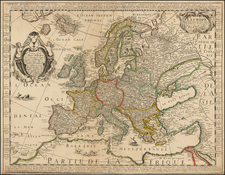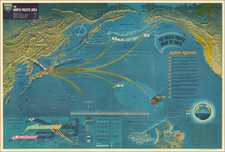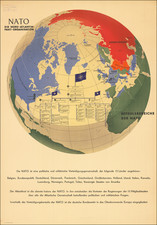With Dedication To One England's Leading Feminist Writers of the Late 17th and Early 18th Centur
Fascinating small map of Europe based upon the geography of Pomponius Mela, with an ellaborate dedication and title.
A very uncommon map of Europe from an edition of Pomponius Mela's geography, published in 1711 by the Exeter scholar John Reynolds, with an homage to a renowned literary figure of the English society, Lady Mary Chudleigh.
Conceptualized by Pomponius Mela, one of the earliest Roman geographers, and brought to life by Reynolds, the map is a masterful rendition of a simplified Europe. Even with a minimalistic design approach, it manages to encapsulate the essence of the continent's geographical features. The cartographic representation is not laden with an overwhelming amount of place names, reflecting the designer's intent to emphasize the broad strokes of geographical context over the finer details of exhaustive site-specific identification.
The dedication of the map to Lady Mary Chudleigh adds another layer of intrigue and historical significance. An English poet and essayist of the late 17th and early 18th century, Lady Chudleigh was an advocate for women's education and rights, and her work often challenged the societal norms of her time. By likening Lady Chudleigh to an English Sappho - a reference to the ancient Greek poetess renowned for her lyric poetry - Reynolds not only honors Chudleigh's literary contributions but also acknowledges her role as a leading female voice of her era.
Moreover, the dedication enhances the map's value as a cultural artifact, intertwining the realms of geography, literature, and society in one singular creation. In its simplification, the map mirrors the direct yet potent style of Lady Chudleigh's writings; in its dedication, it encapsulates her influence and legacy.
The title translates as follows:
The illustrious Maria Chudleigh, wife of Sir George Chudleigh, of Ashton in the County of Devon, distinguished by her talent and learning; The English Sappho, but virtuous, but modest, dedicated this Map of Europe P:S:F:C.
The "P:S:F:C" likely stands for an abbreviation of a Latin phrase and could potentially stand for "Pro Studio Fecit Curavit," meaning "Made and cared for with study."
Pomponius Mela was the earliest Roman geographer. He flourished around 43 AD. Born in Tingentera, now Algeciras, he is known to have died around 45 AD. His work circulated in manuscript extensively during his lifetime and in the centuries after his death. In the sixteenth century, his most famous work, De situ orbis libri III, was printed. With the exception of the geographical section of Pliny's Historia naturalis, which cites Mela extensively, the De situ orbis is the only geographical treatise in Classical Latin.
Mela's geography is distinctive. He divided the world into five zones. Two of these were considered habitable. Like his contemporaries, Mela thought the Caspian Sea as an inlet of the Northern Ocean. This corresponded to the Persian and Arabian (Red Sea) Gulfs in the south. For western Europe his geographical knowledge was more advanced than the Greeks, perhaps because Mela was a Spanish subject of Imperial Rome. Mela's delineation of the Iberian Peninsula is more accurate than Eratosthenes or Strabo. Also, his knowledge of the British Isles and their position was more precise than his predecessors. Mela was the first to name the Orkney Islands and he located them quite well. Father north, however, his knoweldge faltered slightly. He thought there was a large bay (Codanus sinus) to the north of Germany filled with islands including a larger mass he called Codanovia. Codanovia reappears in Pliny the Elder's work as Scatinavia and both names are Latin renderings of Scandinavia. Mela also thought there was a large landmass to the south of the world.










![[ Eastern Hemisphere Globe Gores. ] (Nova et integra universi Orbis descriptio)](https://storage.googleapis.com/raremaps/img/small/54480.jpg)
![[ WWI Anti-German Propaganda ] Le Plan Pangermaniste](https://storage.googleapis.com/raremaps/img/small/63622.jpg)
![(Prussian Octopus) En 1788 Mirabeau disait deja: La Guerre est l’industrie Nationale de la Prusse [Already in 1788 Mirabeau was saying: War is the national industry of Prussia]](https://storage.googleapis.com/raremaps/img/small/76554.jpg)

